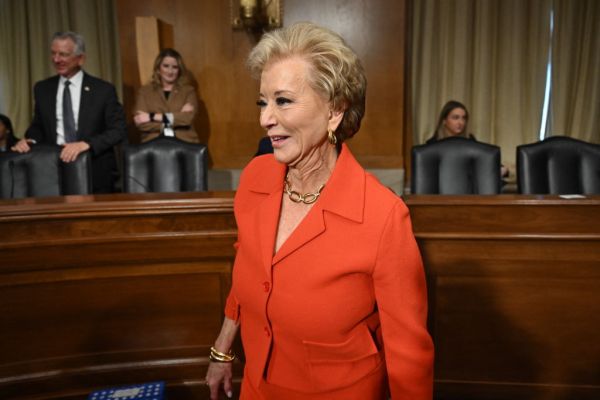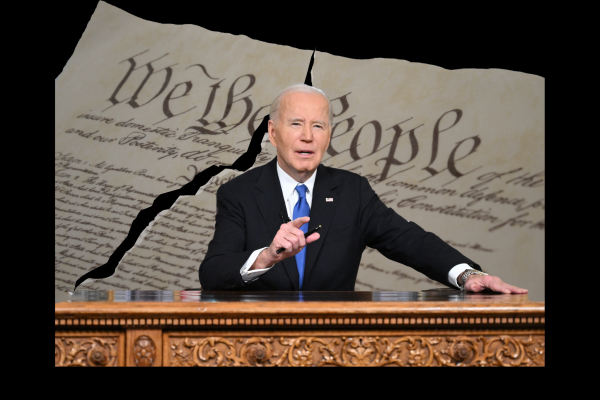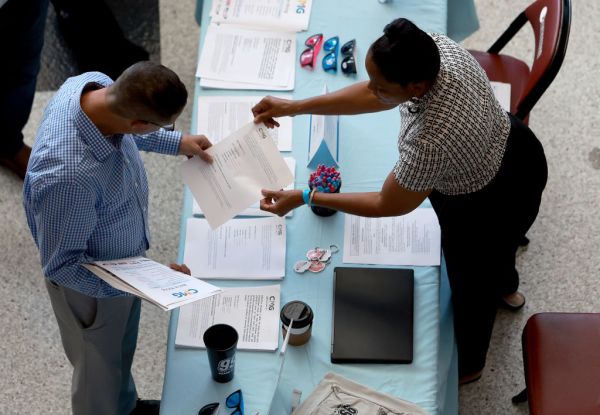It’s been a bumpy ride for student loan borrowers over the last five years. The first Trump administration paused federal student loan payments in 2020 when the pandemic arrived and shocked the world economy. After the 2020 election, President Joe Biden repeatedly extended the pause, but borrowers received a series of conflicting messages as officials repeatedly warned repayment was about to resume, only for the pause to extend again.
Biden simultaneously pledged that broad debt cancellation was imminent. His administration secured more than $180 billion in student loan forgiveness, but the more expansive plans for debt cancellation relied on shaky executive authority, and legal challenges quickly stymied the efforts.
The pauses effectively ended last October—repayment technically resumed in October 2023, but Biden waived collection enforcement for 12 more months—and in April, the Trump administration announced that debt collection for borrowers in default would resume on May 5. The music has finally stopped for the loan leeway, but after years of mixed signals, payment plan changes, and legal limbo, many borrowers aren’t looking for their chairs. Millions of borrowers are already in default and millions more are now in late-stage delinquency, meaning a wave of new defaults could hit as soon as next month.
“The Biden Administration misled borrowers: the executive branch does not have the constitutional authority to wipe debt away, nor do the loan balances simply disappear,” Secretary of Education Linda McMahon said in a statement last month announcing the restart of debt collection. More than 42 million people currently have loans that total $1.6 trillion in student debt. More than 5 million borrowers are currently in default prior to the pandemic pause. They already hadn’t made a payment in more than 270 days before the pause. Another 4 million are delinquent—behind in payments by three to six months—and fast approaching the point of default, according to the Department of Education (DOE).
Compared to before the pauses began, the federal student loan portfolio is in dire straits, according to data from loan servicers and credit reporting agencies. In February 2020, 60 percent of borrowers covered by Nelnet, the largest student-loan servicer, were making payments. In February 2025, the number was 38 percent. An analysis released earlier this month from the credit bureau TransUnion found that in February 2025, 20 percent of borrowers were in delinquency, nearly double February 2020 levels.
Newly delinquent borrowers have already begun to feel the consequences even before the restart of debt collection, experiencing hits to their credit scores as their missed payments are reported to credit bureaus. Many individuals were unaware that repayments had been unpaused. In one case reported by the Wall Street Journal, a borrower saw a nearly 300-point drop in his credit score after a technical issue caused a suspension in automatic payments on his $11,000 student loan balance and resulted in delinquency. Many borrowers who become delinquent could face problems buying a home or a car after their credit scores drop.
Before the pandemic, student loan delinquency was largely concentrated among borrowers who had credit scores too low to qualify for most home or auto loans. But data from the New York Federal Reserve released earlier this month revealed that nearly half of the new delinquencies since credit reporting resumed involved borrowers with better credit. “2.4 million of the newly delinquent had scores above 620 and many would have qualified for new auto, mortgage, and credit cards before these delinquencies were reported,” the New York Fed noted in an article accompanying the release. “These borrowers saw substantial declines in their credit standing in the first quarter and will now face steeper borrowing costs or denial for new credit.”
Preston Cooper, a senior fellow at the American Enterprise Institute who researches student loan policy, told The Dispatch he’s worried about the volume of defaults that could hit in the next two months once delinquent borrowers hit the 270-day mark following the end of the grace period last October. “That’s when we could start seeing some really serious consequences,” he said. People who are still missing payments by then will fall into default, and the Treasury Department will begin debt collection efforts, which include taking money out of tax refunds and Social Security benefits. The DOE’s Office of Federal Student Aid (FSA) will also begin seizing up to 15 percent of defaulted borrowers’ wages—a process known as administrative wage garnishment—later this summer.
Policy analysts and some former officials fault the extended pause and the Biden administration’s mixed messaging around student loan forgiveness for the elevated delinquency and defaults. “Borrowers really felt a lot of whiplash over the last five years or so,” Cooper said. “There was just stunningly inconsistent messaging from the federal government.” He criticized the crying-wolf pattern the administration fell into whenever a pause extension came close to expiring. The DOE would signal repayments were about to resume only for another extension to be granted; it issued a total of eight extensions.
Cooper argued this pattern continued with the 12-month grace period after payments resumed in October 2023. “If the Biden administration had really had a comprehensive plan to re-engage borrowers, and inform them that payments were going to resume again, try and get them transitioned into repayment plans, that on-ramp could have been very useful,” he said. “But the Biden administration, to be quite frank, really didn’t do very much, because they were still hoping to get their loan forgiveness plan through, and that was their main strategy.”
Colleen Campbell, the executive director of the FSA loan portfolio management office until she resigned in March, also criticized the Biden administration’s lack of communication with borrowers. “… [T]he Biden administration could have done a WHOLE LOT more to make delinquent borrowers aware of their status and options, requiring servicers to notify borrowers whose delinquencies have been reset or sending those emails from FSA,” Campbell wrote last month. “They also could have done more outreach to defaulted borrowers to inform them that consequences of being in default would come back at some point, and that those consequences are required by law and can be devastating.”
In recent weeks, the Education Department has tried to increase communication about the borrowers’ renewed repayment obligations. The agency has also reached out to colleges and universities for help in informing their alumni that they need to start payments again or face the consequences of default. But at this late stage, a large number of defaults may be baked in. “There’s some things that the administration can do on the margins,” Cooper said, “but I do worry that a lot of borrowers are simply going to roll up to default, and there’s not much we can do to head that off at this point.”
Even engaged borrowers face logistical and administrative hurdles in resuming payment as a result of the extended pause. Many have lost contact with the companies that service their loans. “If you’ve ever had a mortgage, you know, sometimes they get sold and sent to another [company], then you have to figure out the new customer interface and log into their website and create an ID,” Beth Akers, an economist and former staffer on the Bush administration’s Council of Economic Advisers, told The Dispatch. “The same thing will have happened to a tremendous number of borrowers because of the shift in which servicers the government is using now relative to five years ago.” Some borrowers say the calls from loan servicers attempting to get in contact about repayment have been flagged as spam and their emails were buried in junk folders.
Those who are in contact with their loan servicers are also facing long wait times on the phone when trying to sort out issues or errors with their payment plans. Millions of borrowers restarting payments all at once—something the system was not set up for—has swamped companies.
There’s also a backlog of nearly 2 million borrower applications for income-driven repayment (IDR) plans, which tie repayments to a borrower’s income level. The Biden administration halted processing of IDR applications as court challenges to its expanded payment and forgiveness programs played out. Resolving the backlog likely won’t be helped by the Trump administration’s decision to cut half of all DOE staff. The FSA—the office responsible for federal student loan and aid programs—was gutted, and DOE officials who have recently resigned predict the agency will struggle to administer its programs.
“There’s a population of borrowers out there who are trying to get onto IDR plans, but are struggling to, because of administrative issues and the ongoing litigation around those plans,” Tristan Stein, associate director for higher education at the Bipartisan Policy Center, told The Dispatch. Millions of borrowers remain in limbo as cases challenging the Biden administration’s Saving on a Valuable Education (SAVE) payment plan continue. When the courts enjoined SAVE last summer, the approximately 8 million borrowers who enrolled in the plan were placed in forbearance.
Sooner or later, SAVE is almost certainly headed for the dumpster. The Trump administration could have initiated rulemaking to undo the program just as the Biden administration created it. But congressional Republicans likely wanted to keep the program alive long enough for them to count the spending savings from ending SAVE as part of their calculations for the reconciliation package, which is set to also include large tax cuts.
More changes could be coming as GOP lawmakers eye a major overhaul of the federal student loan system. Congress’ huge reconciliation bill includes a House proposal that would pare payment programs down to two plans, a standard option and an income-based repayment option. It would also cut back on the amount of debt borrowers can take on, including entirely eliminating the Graduate PLUS program, which allowed for effectively uncapped borrowing towards graduate and professional degree programs. And significantly, the proposed legislation establishes loan risk sharing, with colleges and universities being responsible for bearing some of the costs for students who default on loans.
“It is a serious proposal that seeks to, on the one hand, reduce the cost of IDR and on the other hand, address some of the historic challenges we’ve seen with IDR plans,” Stein said of the House reform package. He added that Congress taking back its legislative role in improving federal loan programs would help address uncertainty introduced by executive action, such as Biden’s forgiveness plans. “This is where long-standing, more-permanent solutions from the legislature would be helpful for putting all this on a much more stable foundation and making the whole thing much more navigable for borrowers,” he said.
But the reconciliation process is far from over, and any future legislative changes won’t affect the wave of defaults that could hit in just over a month. “The consequences really are coming back with a vengeance right now,” Cooper said. “I’m not sure that has really sunk in among borrowers, that this time is for real.”










Please note that we at The Dispatch hold ourselves, our work, and our commenters to a higher standard than other places on the internet. We welcome comments that foster genuine debate or discussion—including comments critical of us or our work—but responses that include ad hominem attacks on fellow Dispatch members or are intended to stoke fear and anger may be moderated.
With your membership, you only have the ability to comment on The Morning Dispatch articles. Consider upgrading to join the conversation everywhere.